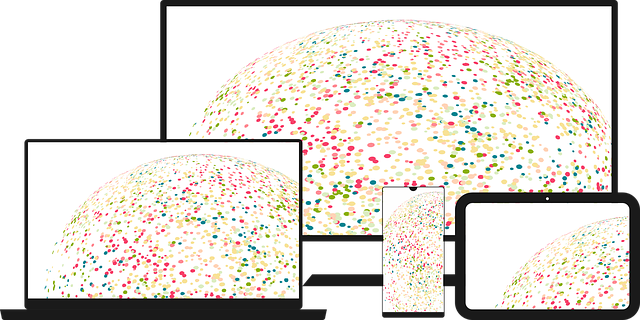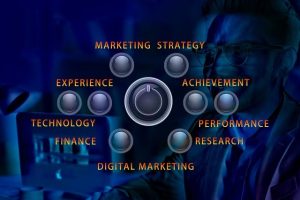Pay-Per-Click (PPC) advertising is a dynamic, cost-effective strategy in digital marketing that boosts online visibility by charging based on user clicks. Marketers bid on targeted keywords, ensuring their ads reach relevant audiences. This precise targeting drives conversions and offers excellent budget control. A successful PPC campaign involves keyword research, compelling ad creation, and optimization, with advanced targeting options like demographic matching. Continuous performance tracking and optimization using tools like Google Analytics are crucial for maximizing ROI in the competitive digital marketing landscape.
In the dynamic landscape of digital marketing, Pay-Per-Click (PPC) advertising stands out as a powerful tool for businesses aiming to boost online visibility and conversions. This comprehensive guide delves into the intricacies of PPC, demystifying its inner workings and unlocking its full potential. From understanding the basic principles to mastering advanced techniques, we’ll navigate through targeting options, performance optimization, and common pitfalls, providing insights crucial for successful digital marketing strategies.
Understanding Pay-Per-Click (PPC) Advertising: A Comprehensive Overview

Pay-Per-Click (PPC) advertising is a powerful tool in the arsenal of digital marketing strategies. It’s a model where advertisers pay a fee each time one of their ads is clicked, typically by a potential customer searching for relevant products or services online. This cost-effective approach allows businesses to gain immediate visibility on search engine results pages, targeting specific audiences with tailored messages.
At its core, PPC advertising focuses on precision and measurement. Advertisers bid on keywords related to their offerings, ensuring that their ads appear only to users actively searching for those terms. This targeted reach makes it an efficient way to drive qualified traffic to websites, landing pages, or apps, ultimately converting interested visitors into customers. The beauty of PPC lies in its transparency; advertisers can set budgets, track clicks, and analyze conversions with ease, making it a dynamic and adaptable digital marketing strategy.
How PPC Advertising Works: The Basics Explained

Pay-Per-Click (PPC) advertising is a powerful tool in the arsenal of digital marketers. At its core, PPC works by allowing advertisers to bid on specific keywords relevant to their target audience. When a user searches for those keywords on search engines like Google or Bing, the advertiser’s ad appears at the top of the results page. The beauty of this system lies in its precision; advertisers only pay when a user actually clicks on their ad, hence the name Pay-Per-Click. This ensures that marketing budgets are used efficiently, as there’s no cost involved if the ad isn’t clicked.
In the world of Digital Marketing, understanding PPC is crucial. Marketers can target specific demographics and interests, ensuring their ads reach the right audience. Each click on an ad increments the advertiser’s budget, but only if it aligns with pre-set bidding strategies. This dynamic approach makes PPC a game-changer for businesses looking to increase their online visibility and drive targeted traffic to their websites or landing pages.
Benefits of Using PPC for Digital Marketing Strategies

Pay-Per-Click (PPC) advertising is a powerful tool in modern digital marketing strategies. One of its key benefits is immediate visibility and targeted reach. By bidding on specific keywords, businesses can ensure their ads are displayed to the right audience at the exact moment they’re searching for relevant products or services. This precision allows for highly effective conversion rates as it directly connects potential customers with what they’re looking for.
Additionally, PPC campaigns offer excellent cost control and budget flexibility. Marketers can set daily or lifetime budgets, ensuring they only pay for actual clicks that lead to engagement. This makes it an attractive option for businesses of all sizes, enabling them to compete in crowded markets without breaking the bank. Moreover, real-time performance tracking and data analytics provide valuable insights, allowing marketers to optimize campaigns, fine-tune keywords, and improve overall digital marketing ROI.
Key Components of a Successful PPC Campaign

A successful Pay-Per-Click (PPC) campaign is a well-oiled machine, with each component playing a vital role in driving traffic and conversions. Firstly, keyword research is the cornerstone; identifying relevant terms that your target audience uses to search for products or services related to your business. These keywords should be specific, relevant, and aligned with your marketing goals. Incorporating them strategically into your ad copy ensures that your PPC ads appear to the right people at the right time.
Ad creation follows, where compelling and concise ad text is crafted to capture attention and convey a clear call-to-action. The landing page, too, must be optimized, ensuring it aligns with the keywords and ad content to provide a seamless user experience. In digital marketing, these elements work in harmony, allowing businesses to target specific audiences, measure campaign performance, and make data-driven adjustments for continuous improvement.
Targeting Options in PPC Advertising: Precision and Reach

In Pay-Per-Click (PPC) advertising, one of the key advantages lies in the sophisticated targeting options available, which offer both precision and reach for digital marketing campaigns. Marketers can precisely tailor their ads to specific audiences by leveraging demographic data, such as age, gender, location, and interests. This level of customization ensures that the right message gets to the right people, maximizing the impact of each click.
Additionally, PPC platforms allow advertisers to choose between broad and exact match targeting. Broad targeting casts a wider net, attracting users with related keywords or interests, while exact match targeting is more focused, displaying ads only when specific search terms are used, providing a tighter connection between ad and audience. This granular approach enhances the relevance of ads, increases click-through rates, and ultimately contributes to better conversion rates in the digital marketing landscape.
Measuring and Optimizing Your PPC Performance

Measuring and optimizing your PPC performance is a crucial aspect of successful digital marketing. By tracking key metrics such as click-through rates (CTRs), conversion rates, and return on ad spend (ROAS), marketers can gain valuable insights into what’s working and what needs improvement. Tools like Google Analytics and advertising platform dashboards provide detailed data that allows for continuous refinement of PPC campaigns.
Regularly analyzing these metrics enables marketers to make data-driven decisions. For example, identifying low-performing keywords or ads can lead to budget reallocation for better-performing alternatives. Optimizing landing pages based on user behavior data can also enhance conversion rates. This iterative process ensures that PPC campaigns remain effective and competitive in the dynamic digital marketing landscape.
Common Mistakes to Avoid in PPC Management

In the dynamic landscape of digital marketing, Pay-Per-Click (PPC) advertising is a powerful tool for businesses to drive targeted traffic and conversions. However, despite its effectiveness, many marketers fall into common pitfalls that hinder their campaign success. One of the biggest mistakes is failing to conduct thorough keyword research, leading to irrelevant ad placements and high costs. Without understanding your target audience’s search behavior, you risk wasting budget on clicks that don’t translate into meaningful engagement or sales.
Another frequent error is underestimating the importance of compelling ad copy and landing pages. Attractive ads that resonate with users’ needs are crucial for clicking through to your site. Similarly, poorly optimized landing pages can result in high bounce rates and missed opportunities for conversion. Ensure your PPC campaigns align with overall Digital Marketing strategies by integrating persuasive messaging, relevant visuals, and seamless user experiences across all touchpoints.
Advanced Techniques for Maximizing PPC ROI

In the dynamic landscape of digital marketing, maximizing Pay-Per-Click (PPC) ROI requires a strategic approach that goes beyond basic targeting and bidding. Advanced techniques such as intelligent keyword research using tools like Google Ads Keyword Planner and SEMrush can uncover valuable long-tail keywords with lower competition but high intent. This allows for more precise targeting, improving click-through rates and reducing cost per acquisition.
Additionally, leveraging retargeting campaigns, where advertisers show ads to users who have previously interacted with their brand, can significantly boost conversions. Dynamic ad copy personalization based on user behavior and demographics further enhances engagement. Regular A/B testing of ad creatives, landing pages, and offers enables continuous optimization, ensuring that PPC campaigns remain effective in a competitive digital marketing environment.
